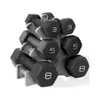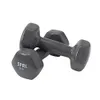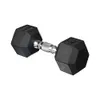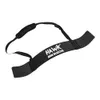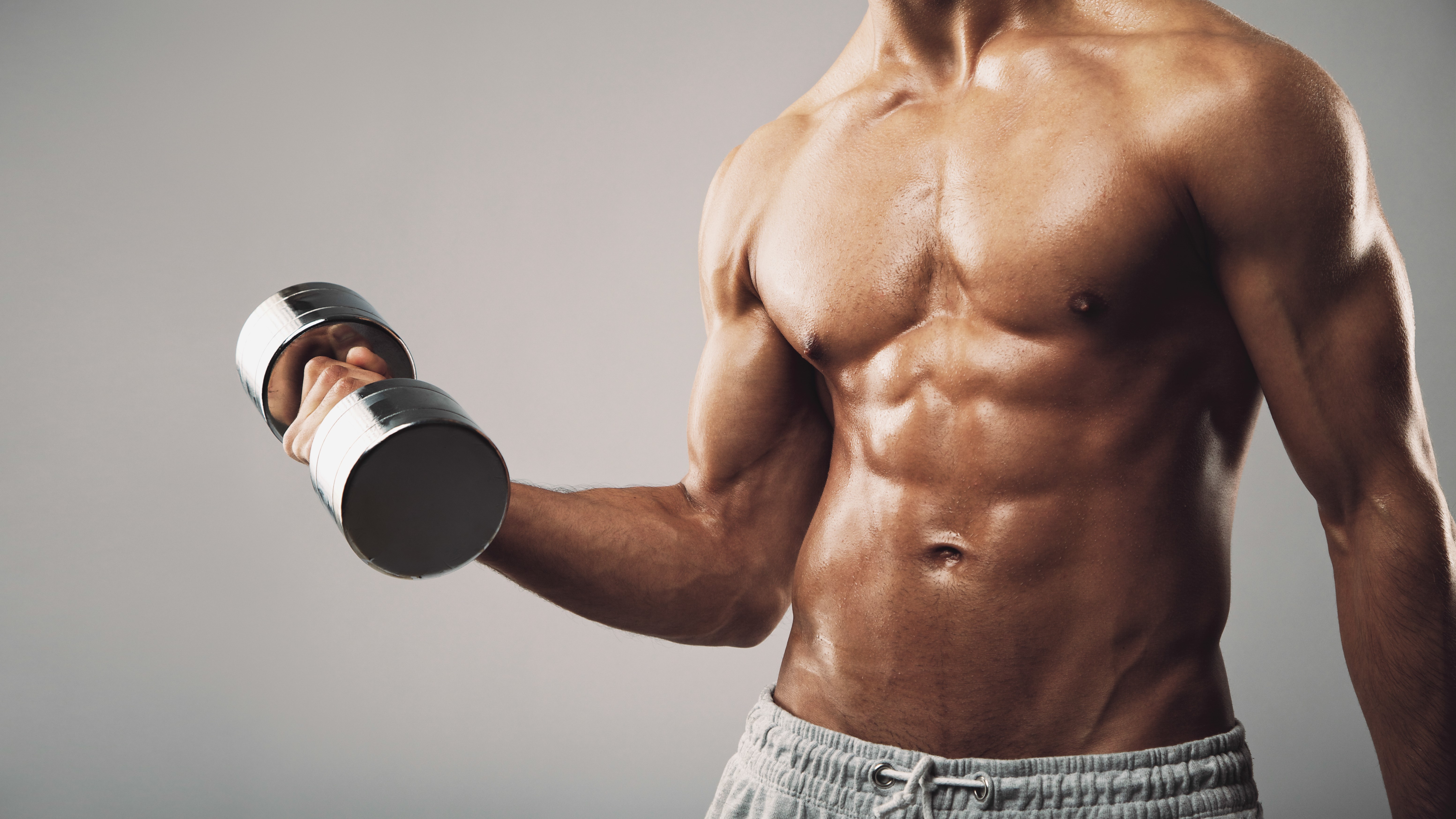
I’d argue that we’ve fallen into a trap: overcomplicating our workouts. Drawn in by sparkly new exercises and social media trends, we’ve forgotten that the most effective workouts are actually just simple and efficient. Tried-and-tested.
When I start falling into this trap myself, and it does still happen, there’s a formula I repeatedly return to: functional training + compound exercises + progressive overload = build strength and muscle. Yes, it is that simple.
And yes, it’s also fun to mix up your routine here and there and try new exercises and techniques; after all, adaptation is how we avoid plateaus in training programs. But sticking to the basics and building upon them, while maybe not as shiny and attractive, always works.
These are the five types of compound movement I swear by, and the top five compound lifts to try.
What is functional training?
Before we jump into it, it’s worth understanding why the types of movements I'm about to shout out work so effectively. We know the effects of functional training are well-documented, but what does it all mean?
Functional training is one of the best ways to build a strong body, grow muscle and increase power and resilience to injury. Incorporating functional movement into your regimen can improve joint stability, mobility, coordination and balance and translate to better overall daily function. It can even boost each component of physical fitness.
Functional training is one of the best ways to build a strong body, grow muscle and increase power and resilience to injury.
I want you to think of movements you do every day: push, pull, squat, lunge, crawl, throw, or jump, for example. Combining them does two things: it moves your body in every direction and works multiple muscles and joints, big and small, simultaneously.
Sign up to get the BEST of Tom's Guide direct to your inbox.
Get instant access to breaking news, the hottest reviews, great deals and helpful tips.
The basis of functional training is compound exercise (multi-joint, multi-muscle movements like lunges or push-ups) combined with the three planes of motion (moving multidirectionally like rotating, or bending forward or sideways). Primal movement, including animal flow, is a shining example of “functional,” teaching the body to move naturally — how the body was designed to.
Compound exercises fall into the following movement-type categories and tick the functional box, helping you build a robust body from head to toe.
Depending on how you train and split your routines, plucking movements from each category will save time and confusion and keep your workouts efficient and effective for maximum results — no complications.
Here they are.
1. The push
Pushing exercises require the body to press against resistance to perform a movement — the push-up, overhead press and bench press are all fine examples. However, pushing exercises can technically be lower-body, too.
Think of pushing your feet against the leg press or pressing the ground away to stand during a squat. Lunges and hip thrusts are also considered pushing exercises (in this context), as you extend your legs and hips to drive weight away.
Upper-body focused pressing exercises primarily target (to different degrees, depending on the move) the pectoralis muscles, anterior and lateral deltoids, triceps and core muscles (for stabilization and assistance). For the lower body, primarily the quadriceps, hips and glutes.
2. The pull
Perhaps my favorite because more sedentary lives are weakening our posture!
Pulling exercises draw the load or body part toward you — the opposite of pushing. Think rows, deadlifts, or pull-ups. These types of exercise primarily target the back muscles, posterior chain and the biceps; in a lower-body setting, it’s the hamstrings, hips, calves and glutes.
Other examples include the bicep curl (pulling the weight toward you) and hamstring curl (pulling your foot towards your butt). When I think "pull," I immediately think "posture." These types of exercise can strengthen back-body muscles, including the rhomboids, erector spinae, rotator cuff and lats, which all play a role in shoulder and spine support.
3. The hinge
Next, we have the hinge. Think the good morning exercise, deadlift variations and kettlebell swings. During each exercise, you’ll hinge at the hips, targeting the back-body and drawing the lower and upper body toward each other, then move into hip extension, which is more of a thrust.
The hinge is more hamstring and glute-focused. However, cleans and snatches, although technically categorized as a pulling motion, can also sit within the hinge camp due to the action of the hips.
4. The rotation and anti-rotation
Rotational motion requires the body to turn from side to side (think Russian twists), and anti-rotational exercises require the body to stabilize and resist against rotation (like the Pallof press). Single-sided movements can also be anti-rotational, as your body must work to prevent you from leaning or falling to one side.
A great example of this is walking with weights, which arguably sits within its own category of functional movement. A farmer's carry, especially when loading only one side of the body, teaches you to stabilize your torso while under load, rather than allowing your body to be pulled down to the side.
5. The squat
Yes, squats sit broadly within the push category, but there are a few things to consider about the movement pattern during the concentric and eccentric phases.
As you lower into the squat (eccentric motion), you’ll hinge at the hips and flex the knees; as you push upward (concentric), you’ll simultaneously extend through these joints to stand. It's a front-body dominant exercise, targeting the quads heavily. However, depending on your foot stance and how you load, you can make a squat more or less quad or glute-focused.
In comparison, during a hinge motion, the hips flex, then press forward to extend with minimal movement initiated at the knee.
What are the five best compound lifts for building functional strength and muscle?
Based on the above, I recommend adding these “big five” compound lifts into your workout program and building out other exercises around them:
- Bench press
- Overhead press
- Pull-up
- Squat and
- Deadlift.

The “big five” hit every major muscle group, recruit their corresponding synergist muscles (the assistors that support them) and are the very definition of "compound." Each more requires core engagement for trunk stability and to support the spine.
If you ask my opinion (you haven’t, but I’ll share it anyway), focusing on these five fundamental lifts will provide a solid foundation for your training. Then, you can color in the rest of your routine with variations of the things you love. Keeping the foundations consistent allows you to follow a template while tweaking the specifics as you go, which keeps things measurable, buildable and challenging.
Keeping the foundations consistent allows you to follow a template while tweaking the specifics as you go, which keeps things measurable, buildable and challenging.
After speaking with my partner recently, who is also a fitness trainer, he told me his training style was “old school.” When I questioned what that meant, he explained that the basis of all client programming remains the same every single time: include the fundamentals — functional big lifts coupled with progressive overload — then adapt the accessory moves to keep it fresh.
Sure, he'll tap into variations of those lifts here and there, but the basis stays the same, which means he plucks from the five categories and follows the exercises I've listed above.
Progressive overload simply refers to adjusting volume (think sets, reps, load, or training frequency) over time as your body responds to training stimuli. It’s tricky to do this with sporadic, ever-changing, or random workouts, so the best way to track your progress is to stick with a training program that can be measured and adjusted.
I think we've been led to believe that our training programs should be vast and fancy, but simple works incredibly well.
A strength program including these five functional movements could elevate your gains in the gym or wherever you train, helping you to build strength, muscle and fitness. They hit the most muscle groups in each plane, are fuss-free and endlessly scalable.
More from Tom's Guide
- Strength vs hypertrophy: what's the difference?
- High reps vs heavy weights: which is better for building muscle?
- The 5 best ways to build muscle without lifting heavier weights

Sam Hopes is a level 3 qualified trainer, level 2 reiki practitioner and senior fitness writer at Tom's Guide. She is also currently undertaking her Yoga For Athletes training course. Sam has written for various fitness brands and websites over the years and has experience across brands at Future such as Live Science, Fit&Well, Coach, and T3.
Having worked with fitness studios like F45 and Virgin Active, Sam now primarily teaches outdoor bootcamps, bodyweight, calisthenics and kettlebells. She also coaches mobility and stretching-focused classes several times a week and believes that true strength comes from a holistic approach to training your body.
Sam has completed two mixed doubles Hyrox competitions in London and the Netherlands and finished her first doubles attempt in 1:11.
You must confirm your public display name before commenting
Please logout and then login again, you will then be prompted to enter your display name.

